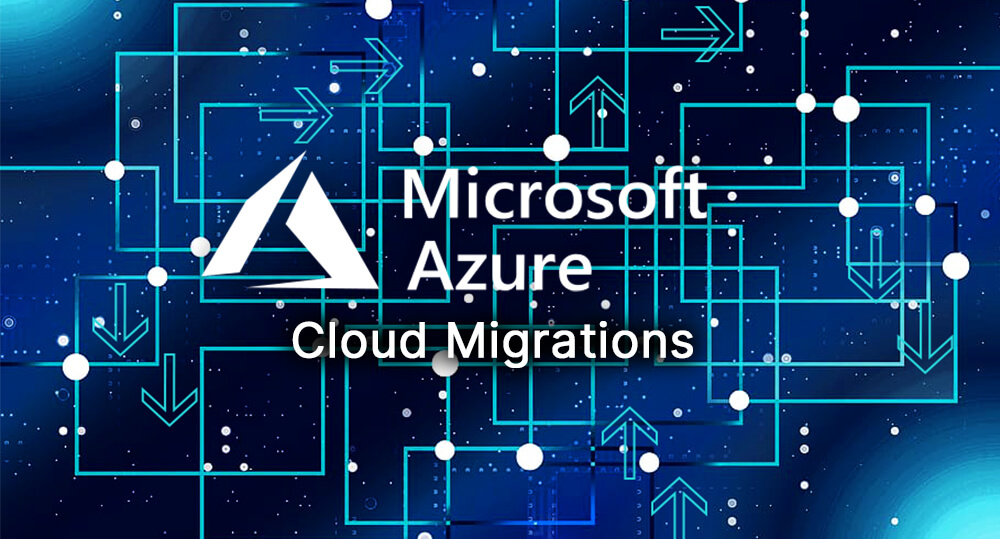Strategy
Migrating online services to the cloud can sound like a headache but there are tools and strategies to help you along the way.
- Assess
- Migrate
- Optimize
- Monitor
Assess which path your application and infrastructure will take:
- Rehost: Move your virtual machines to a new host
- Refactor: Move virtual machines to PaaS services
- Rearchitect: Rethink the strategy of your app using cloud services
- Rebuild: Start the app from scratch
- Replace: Replace services with SaaS or third party applications
Involve the application’s key stakeholders to decide which direction to take.
Estimate the cost savings to be made with the Azure TCO Calculator.
Migrate your systems using one of Azure’s migration tools.
Azure Migrate can replicate up to 100 VMs simultaneously.
Azure Site Recovery and Azure Database Migration service will recreate services for you.
Azure Data Box can be used to migrate large amounts of data offline, perfect for locations with low internet bandwidth.
For databases:
- Assess your on-premises databases with the Data Migration Assistant.
- Prepare the target environment.
- Create an Azure Virtual Network
- Configure the network security group with these ports: 443(https), 53(dns), 9354(Azure Service Bus), 445(smb), 12000(Azure diagnostics)
- Configure Windows firewall to allow port 1433(SQL) and optionally 1434.
- Add CONTROL SERVER permissions to source SQL credentials, Add CONTROL DATABASE permissions to target SQL DB.
- Separate schemas from data and migrate to target.
- Create and run an Azure Database Migration Service project to move the data.
- Monitor the migration.
Databases can be migrated to Azure SQL Database managed, SQL Server on a VM, Azure Database for MySQL, PostgreSQL, or Azure Cosmos DB.
After migrating the service, review security settings, create network security groups, encrypt the disks, and add a backup schedule.
Optimize your systems to run on cloud infrastructure.
Analyze running costs with Azure Cost Manager and set budgets.
Review opportunities to improve.
Monitor the health and performance of your systems.
Install the Log Analytics agents on your servers to monitor them with Azure Monitor.
Monitor the security settings and backup schedule.
Tools
| Assess | Migrate | Optimize | Monitor | |
| Azure Migrate | x | x | ||
| Service Map | x | |||
| Azure TCO Calculator | x | |||
| Azure File Sync | x | |||
| Azure Database Migration | x | |||
| Data Migration Tool | x | |||
| Azure Data Box | x | |||
| Azure AD Connect | x | |||
| Azure Cost Management | x | x | ||
| Azure Advisor | x | |||
| Azure Monitor | x | |||
| Azure Sentinel | x |
Azure Migrate: Perform assessment and migration of physical servers, databases, storage, web applications, virtual desktops, cloud VMs, Hyper-V VMs, and VMware VMs.
- Free service
- Provides performance-based sizing calculations to figure out VM size and compute/storage requirements
- Works on Hyper-V and VMware-based systems, as well as physical servers
- Shows the dependencies of the server (FQDN, OS, IP addresses, MAC addresses, running processes, and connections)
Service Map: Map communications between Windows or Linux application services and identfy dependencies.
Azure TCO Calculator: Estimate monthly costs of running on Azure.
Azure File Sync: Migrate and sync on-premises file servers to Azure Files.
Azure Database Migration Service: Migrate database workloads to Azure with the Data Migration Assistant and Azure portal.
Data Migration Tool: Migrates existing databases to Azure Cosmos DB.
Azure Data Box: Migrate large amounts of data using offline hard drives.
Azure AD Connect: Connect and sync Active Directory authentication.
Azure Cost Management: Monitor, control, and optimize Azure costs.
Azure Advisor: Optimize Azure resources for high availability, performance, and cost.
Azure Monitor: Monitor your infrastructure’s performance with health monitoring, enhanced telemetry, and notifications.
Azure Sentinel: Discover security analytics for your applications.
Migrating Azure VMs
When migrating Azure VMs between resource groups, there are a few important tips to remember:
- Storage accounts, virtual networks, and virtual machines can be moved across resource groups but they must be moved with their dependencies.
- Azure AD domain services, Backup vaults, and App Service gateways cannot be moved.
- You can validate a migration with the REST API using ‘validate move’ which will return a 204 status code if it’s allowed.
- You won’t be able to add, delete, or update any resources as they’re being moved.
- Your resources don’t change locations.
